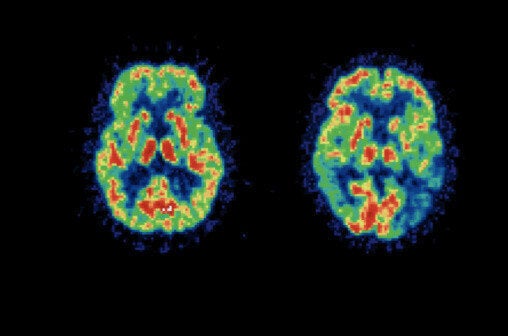
Last week an advisory committee to the Food and Drug Administration unanimously recommended the approval of a diagnostic brain scan for Alzheimer's disease. The new technology is based upon imaging and quantifying the amount of a specific protein, beta amyloid, in the brains of patients suspected of having the disease. Research has demonstrated a striking correlation between the amount of beta amyloid in the brain and the degree of cognitive impairment in Alzheimer's patients.
Dr. Norman Foster, professor of neurology at the University of Utah, testified before the FDA committee and was quoted in The New York Times stating the approval of the new scan "would be a historic advance in neurology and in the daily management of patients with memory complaints," an interesting comment as the article goes on to say, "If a person has Alzheimer's though, there is as yet no treatment that can slow or reverse the disease ... "
Over the past several decades, the understanding of beta amyloid's role as a causative agent for Alzheimer's disease has served to underpin worldwide research in attempt to develop meaningful treatments designed to rid the brain of this damaging protein. Interestingly, these attempts have met with almost universal failure. Most recently, pharmaceutical giant Eli Lilly announced yet another failure in an attempt to chemically reduce beta amyloid in humans. In an August 17, 2010 press release the company noted that their experimental drug semagacestat, an "oral agent designed to reduce the body's production of amyloid beta plaques, which scientists believe play an important role in causing Alzheimer's disease," actually caused more rapid decline in Alzheimer's patients. The company revealed that patients treated with the experimental drug "worsened to a significantly greater degree than those treated with placebo."
If beta amyloid were the cause of Alzheimer's disease, then why would ridding the brain of this protein actually cause patients to worsen? Harvard researcher Dr. Stephanie Soscia and her associates may have the answer. Their recently published research questioned why beta amyloid accumulates in the Alzheimer's brain in the first place, and concluded that in fact, the protein actually serves to rid the brain of a variety of bacteria and viruses. They described beta amyloid as an "antimicrobial peptide" which accumulated in response to an infectious agent. Their work looks upon beta amyloid in a new light as they stated, "If the normal function of beta amyloid is to function as an antimicrobial peptide, then an absence of the peptide may result in increased vulnerability to infection." Rather than causing the disease, beta amyloid may be our brain's natural response to an infectious agent, accumulating as a way of defending us against a pathogen. So perhaps we should reconsider beta amyloid since it has been said that "the enemy of my enemy is my friend."
Assuming beta amyloid is produced in response to an infectious agent, logically we would want to examine the evidence supporting the role of infection in Alzheimer's disease. Over the past several years, compelling evidence has surfaced linking herpes simplex virus type 1 (HSV1) to Alzheimer's disease. In 2008, Canadian researchers Luc Letenneur and Karine Peres demonstrated a dramatic increase in antibodies directed against HSV1 in Alzheimer's patients compared to age-matched individuals without the disease. Professor Ruth Itzhaki from the University of Manchester has explored the relationship of HSV1 to Alzheimer's disease in great depth. In her landmark article published in 2008 entitled "Herpes Simplex Virus Type 1 in Alzheimer's disease: The Enemy Within," Dr. Itzhaki revealed that HSV1 infects the brains of 90 percent of adults. If HSV1 causes Alzheimer's, this high rate of infection would be a necessary characteristic in light of the very high prevalence of Alzheimer's disease. Further, she points out, HSV1 can remain latent in the nervous system lifelong and may undergo periodic reactivation causing persistent brain inflammation. As an example, HSV1 is the cause of recurrent fever blisters that occur when the virus gets activated in the brain. Undoubtedly the most compelling evidence linking HSV1 to Alzheimer's disease comes from her recent discovery of HSV1 DNA actually located exactly within the beta amyloid plaque, the so-called "hallmark" of the disease.
So compelling are these findings that Dr. Itzhaki has concluded, "Our present data suggest that this virus is a major cause of amyloid plaques and hence probably a significant etiological factor in Alzheimer's disease. They point to the usage of antiviral agents to treat the disease and possibly of vaccination to prevent it."
The FDA's likely approval of technology allowing the quantification of beta amyloid in suspected Alzheimer's patients will clearly provide a valuable tool in defining the cause of dementia in cognitively impaired individuals. But focusing on ridding the brain of this protein may be treating the smoke while ignoring the fire. Indeed, the evidence now suggests that beta amyloid protein may very well represent a positive response in the brain's attempt to deal with a viral infection. Proving the role of HSV1 in Alzheimer's disease could be as simple as treating a group of patients with readily available antiviral medication. Dr. Itzhaki recently sent me an email indicating she stands ready to get this research underway, but as is so often the case, funding the study remains a challenge.